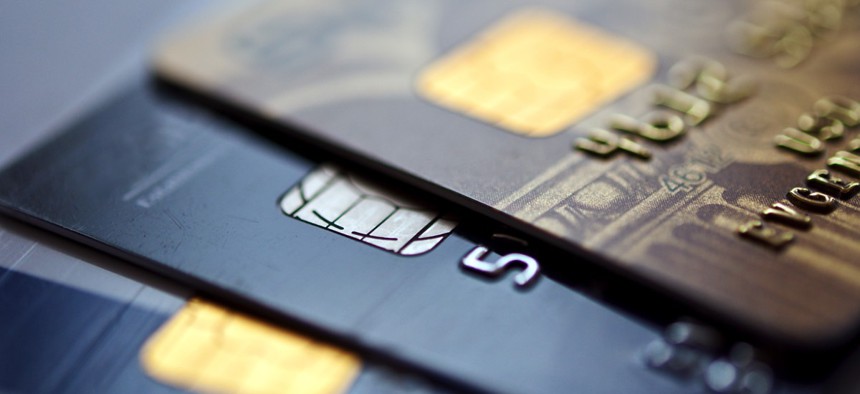Should Local Governments Rush to Upgrade Point-of-Sale Terminals?

Chip cards Ded Pixto / Shutterstock.com

Connecting state and local government leaders
Microchipped credit and debit cards are finally taking off in the U.S., but Apple Pay and Google Wallet could undo them, according to one tech expert.
Before local governments spend tens of thousands of dollars upgrading point-of-sale terminals to accept EMV payment, they should evaluate the amount of credit and debit card fraud they encounter, NIC Services President Mukesh Patel told Route Fifty.
Cyber breaches at T.J. Maxx and JPMorgan Chase—precipitating billions of dollars in credit and debit card fraud—led President Barack Obama to issue the BuySecure Executive Order in October, hastening adoption of Europay, MasterCard and Visa (EMV) microchip card security.
But the order is not a local government mandate, Patel said, and EMV tech protects against point-of-sale fraud, not cyber breaches.
“Providing portals in government, we’ve found our fraudulent transactions are little to none,” he said. “But that hasn’t stopped the industry, especially card brands, pushing and almost using scare tactics to try and get these merchants to change terminals.”
The biggest “incentive” for government merchants to upgrade terminals is October’s liability shift, when merchants, not card issuers, will begin to be held liable for counterfeit card use if their systems still only accept magnetic swipes—the backbone of U.S. cards since the 1960s.
Magnetic swipe cards are very easy to counterfeit, so Europay, MasterCard and Visa began embedding random number-generating chips in cards that caught on in Europe, Australia and coastal Asia within the last decade.
The U.S. has been a holdout because the cost to generate chip-and-pin cards is more, and neither banks nor merchants had the systems in place to accept the technology.
But the recent uptick in cyber breaches has provided a new opportunity to peddle the EMV agenda, Patel said.
NIC Services works with all 50 state governments, he said, and collects customer data showing their incidences of point-of sale fraud are very low.
Government merchants can lower their fraud risk without upgrading from a $70 terminal to a $400 terminal simply by asking citizens, coming to the Department of Motor Vehicles counter looking to renew their driver's licenses or City Hall for a building permit, for a second form of ID.
Another reason for local governments to use Patel’s wait-and-see approach is EMV standards aren’t yet uniform, with MasterCard wanting a 4-digit PIN while Visa would prefer just a signature.
Deadlines haven’t been set for many merchants, and with paying at the pump so reliant on magnetic swipe still gas stations aren’t expected to upgrade their terminals until 2017.
Patel thinks it could be five or six more years before wide-scale adoption, and that’s assuming competition from Apple Pay and Google Wallet doesn’t invalidate EMV terminals.
“Wherever I can use Apple Pay I use it because they have a completely different security posture, where your credit card number is never ever transmitted,” Patel said. “Looking at the demographics of our own customers and citizens, people are doing a lot more on mobile, so I certainly see them gaining more and more traction because this offers a convenience lifestyle.”

NEXT STORY: Tax Resistance Unlikely to Thwart Vermont Education Reform





